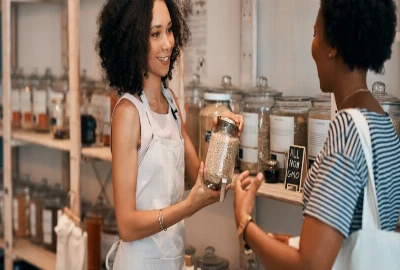Pop, Politics, and Parasocial Love: Why 2025’s Biggest Artists Feel Like Best Friends

Not too long ago, musicians were larger-than-life icons—untouchable, mysterious, and carefully managed by record labels. Fans saw them on TV, heard them on the radio, and maybe caught them live on tour if they were lucky. Fast-forward to 2025, and the dynamic between artists and audiences has completely transformed. Today’s biggest pop stars don’t just perform for fans—they perform with them, on their For You Pages, Twitter feeds, and Instagram stories.
This intimacy is why so many people say their favorite artist “feels like a best friend.” Through daily content, livestream check-ins, candid behind-the-scenes posts, and even political activism, stars collapse the distance between fame and familiarity. Whether it’s Olivia Rodrigo sharing her journal-like lyrics, Bad Bunny dropping surprise tracks straight onto streaming apps, or Billie Eilish openly discussing mental health, artists in 2025 are no longer distant idols—they’re companions, confidants, and sometimes even advocates.
This blog unpacks how parasocial relationships (those one-sided emotional bonds fans form with public figures) have become central to modern fandom, why politics and personal authenticity fuel these connections, and what it means for the future of pop culture.
Parasocial Love in the Streaming Era
The term “parasocial relationship” might sound clinical, but in practice, it explains why fans feel deeply connected to their favorite stars. It’s the emotional illusion of friendship, born when someone consumes enough personal, intimate content from a celebrity that they feel genuinely close to them—even though the relationship is one-sided.
In the streaming and social media era, parasocial bonds are no longer accidental; they’re cultivated. Artists know that being relatable translates directly into loyalty, engagement, and streams. When Taylor Swift drops Easter eggs on TikTok or Charli XCX posts a casual studio selfie, it’s not just content—it’s a form of digital intimacy designed to keep fans emotionally invested.
Unlike the old days of music videos and glossy magazine spreads, fans now have unprecedented access to the “everyday” lives of their idols. We see them in messy kitchens, pajamas, or ranting about current events on livestreams. This constant drip of content builds the illusion of ongoing friendship. Fans feel like they’re in the room with their favorite artists, sharing inside jokes and experiences.
But parasocial love is more than marketing. It gives fans comfort, identity, and community. In a world where loneliness and digital isolation are widespread, connecting to artists provides a sense of belonging. Online fandom spaces double as support networks, where fans share struggles and victories while bonding over their shared “friendship” with a star.
This level of closeness also has consequences. While it deepens loyalty, it also raises questions about boundaries, mental health, and the pressure artists face to constantly “be available.” Still, the fact remains: in 2025, parasocial love isn’t a side effect of fame—it’s part of the business model.

Pop Meets Politics: Activism as Intimacy
One of the most striking shifts in 2025’s pop landscape is how deeply entwined politics and music have become. Gone are the days when “staying neutral” was the norm. Today’s artists recognize that silence can be interpreted as complicity, and their voices carry tremendous influence. By taking stands on social issues, they deepen their parasocial bonds with fans—becoming not just entertainers but also advocates and allies.
Think about how artists like Beyoncé and Kendrick Lamar transformed performances into statements on race and inequality, or how younger stars like Olivia Rodrigo and Halsey speak out about reproductive rights, climate change, and mental health. When an artist publicly supports causes that fans also care about, it fosters intimacy. It feels less like following a celebrity and more like standing beside a friend at a rally.
The political dimension also makes parasocial bonds more complex. Fans don’t just consume music—they rally behind messages. Bad Bunny’s advocacy for Puerto Rican independence or Greta Van Fleet’s environmental activism aren’t just branding exercises—they’re touchpoints for communities to connect with stars on a moral, almost personal level.
This blending of pop and politics isn’t entirely new (think John Lennon or Nina Simone), but social media amplifies it. Now, an artist can tweet, livestream, or post a TikTok in real time during moments of political crisis. Fans don’t just watch—they interact, comment, and feel included in the conversation.
However, this intimacy carries risks. Political stances can alienate certain audiences, create backlash, and put artists under constant scrutiny. Still, for many, the rewards outweigh the risks. In 2025, being politically vocal is no longer optional for the biggest stars—it’s a key way to strengthen the bond that makes fans feel like they’re not just listening to music, but standing with a friend.

Social Media: The Great Equalizer
Perhaps the single most powerful tool in creating the “best friend” illusion is social media. Apps like TikTok, Instagram, X (formerly Twitter), and YouTube are no longer just promotional platforms—they’re extensions of an artist’s persona. They allow fans to experience raw, unscripted content alongside polished music videos and performances.
Consider how stars in 2025 manage their feeds. Instead of relying solely on carefully crafted PR campaigns, they balance professional rollouts with casual, personal moments: cooking dinner, chatting with fans on livestreams, duetting fan videos, or joking about everyday mishaps. This “relatable content” makes fans feel like insiders, privy to details no press interview could capture.
Social media also eliminates traditional gatekeepers. In the past, fans might wait months for an interview to learn anything personal about their favorite singer. Now, a single Instagram story can provide instant access. This real-time intimacy fosters constant engagement, with fans checking in daily like they would with a friend.
Moreover, social platforms democratize fame. Rising artists don’t need massive label backing to build an audience—they just need a viral moment. And because these careers are born from relatability, fans often feel more ownership and closeness to these stars than to traditional celebrities. They remember “being there from the beginning,” which strengthens loyalty even as the artist grows into superstardom.
But this accessibility has downsides too. Constant visibility blurs boundaries, making artists more vulnerable to invasive fan behavior or harassment. It also creates pressure to maintain an always-on presence, which can be mentally exhausting. Still, the benefits are undeniable: social media allows artists to cultivate intimacy at scale, making millions of fans feel like they’re all part of one enormous, ongoing conversation with their “friend.”

The Double-Edged Sword of Intimacy
While parasocial bonds, political engagement, and social media closeness create powerful fan relationships, they also come with challenges—for both fans and artists.
For fans, the danger lies in overidentification. When someone feels like their favorite singer is a best friend, disappointment or disagreements can cut deeper. If an artist takes a political stance a fan disagrees with, or fails to meet expectations, the sense of betrayal can feel personal—even though the relationship was never reciprocal. This has led to intense “cancel culture” cycles, where artists are alternately idolized and vilified depending on their perceived alignment with fan expectations.
For artists, the intimacy is both a blessing and a burden. Being authentic keeps audiences engaged, but it also means less privacy and more emotional labor. Stars are expected not only to produce art but also to constantly share, interact, and maintain the illusion of closeness. This can lead to burnout, anxiety, and a blurred line between public and private life.
There’s also the question of sustainability. Can artists keep up this level of intimacy as they age, evolve, or step back from social media? Or will fans eventually crave mystery and distance again, as they did in earlier eras of celebrity culture?
What’s clear is that this intimacy is redefining stardom. Artists in 2025 aren’t just performers—they’re companions, advocates, and digital presences woven into fans’ daily routines. Whether that dynamic remains sustainable will shape the next chapter of pop culture.




